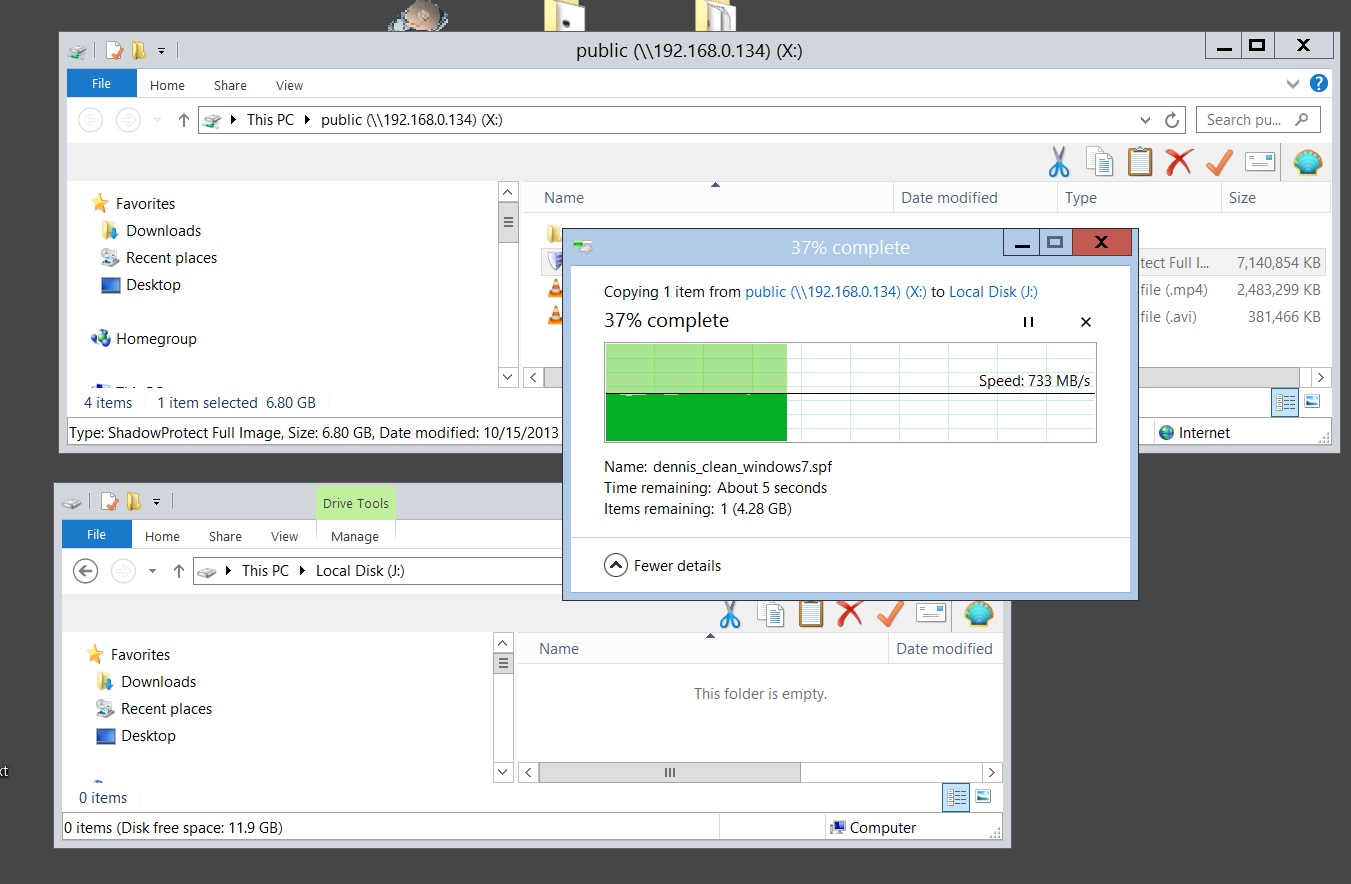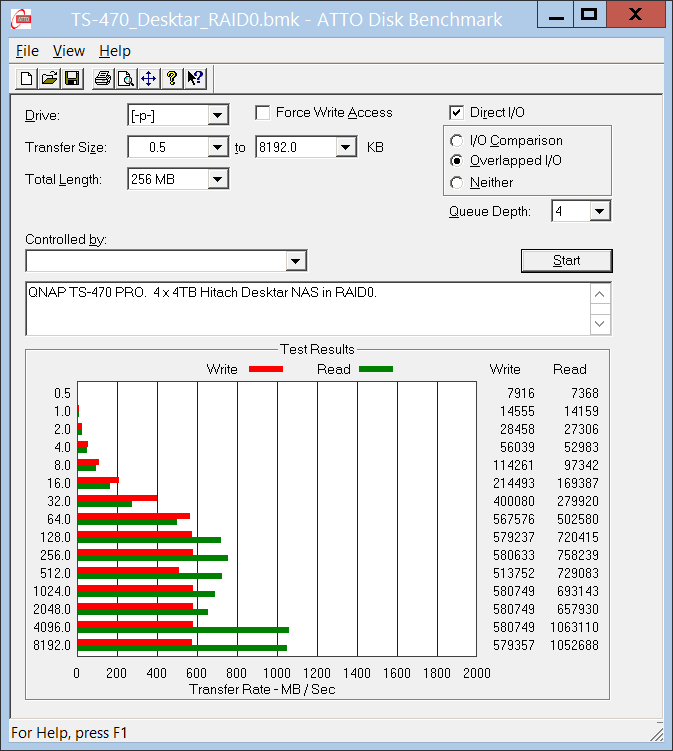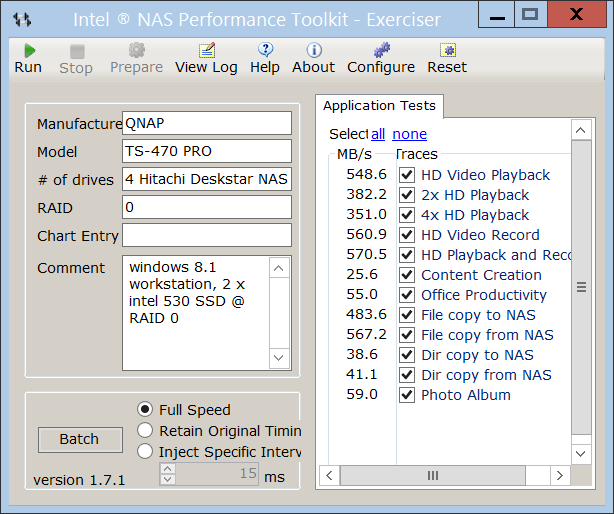Dennis Wood
Senior Member
I haven't posted a great deal of late, but here are some performance numbers that might surprise you.
The arrival of "reasonably" priced 10G hardware has precipitated another round of testing in my test lab to see if the team at Cinevate can take advantage of shared storage at 10Gbe speeds for our media projects using the Adobe CC suite. We deal with a lot of HD (and now 4K) footage as well as raw product photos etc. As luck would have it, my old friends at Qnap and I were discussing my ambitions for 10G and they kindly sent out a TS-470 PRO with dual port 10G interface installed. Terry Kennedy from the forum here gave us a great deal on a used Netgear 10G switch..so the testing began.
After about 2 weeks of testing, some frustration and a lot of learning, you can see the results below of two windows workstations hitting up the TS470-PRO NAS with simultaneous "real world" requests for 10GB of media data.
I'll be doing a series of blog posts that will be helpful for those looking to do the same. If anyone has any requests, please indicate the in this thread.
1. Pcie 4x slot vs 8x slot Intel x540 10G NIC considerations. Basics of PCIe bandwidth and motherboard PCIe lane limitations.
2. 10G performance over cat6 and cat5e cable runs. (Not tested yet)
3. Use of NTttcp and ramdrives in 10G troubleshooting. Use of simple benchmarking tools that accurately reflect 10G file performance.
4. Qnap 4.1 and samba 3 asynchronous I/O considerations. I had to reinstall 4.1 code to get samba3 windows options back after disk volume deletion and replacement on the NAS.
5. Windows SMB2 vs SMB3 considerations. I had posted about SMB1 vs SMB2 performance several years back that changed the platform used for NAS testing at smallnetbuilder.com. It is obvious in my tests that SMB3 performance in Windows 8.1 will precipitate another change in testing. Samba SMB3 support in qnap 4.1 firmware was well timed indeed
6. Antivirus, impact of file I/O and CPU saturation at 10G transfer speeds.
7. Disk I/O, SSD/RAID vs ramdrive and testing.
8. Windows 10G driver configuration and jumbo frame considerations.
9. Performance results of Adobe CC suite products using QNAP 10G shared storage.
The arrival of "reasonably" priced 10G hardware has precipitated another round of testing in my test lab to see if the team at Cinevate can take advantage of shared storage at 10Gbe speeds for our media projects using the Adobe CC suite. We deal with a lot of HD (and now 4K) footage as well as raw product photos etc. As luck would have it, my old friends at Qnap and I were discussing my ambitions for 10G and they kindly sent out a TS-470 PRO with dual port 10G interface installed. Terry Kennedy from the forum here gave us a great deal on a used Netgear 10G switch..so the testing began.
After about 2 weeks of testing, some frustration and a lot of learning, you can see the results below of two windows workstations hitting up the TS470-PRO NAS with simultaneous "real world" requests for 10GB of media data.
I'll be doing a series of blog posts that will be helpful for those looking to do the same. If anyone has any requests, please indicate the in this thread.
1. Pcie 4x slot vs 8x slot Intel x540 10G NIC considerations. Basics of PCIe bandwidth and motherboard PCIe lane limitations.
2. 10G performance over cat6 and cat5e cable runs. (Not tested yet)
3. Use of NTttcp and ramdrives in 10G troubleshooting. Use of simple benchmarking tools that accurately reflect 10G file performance.
4. Qnap 4.1 and samba 3 asynchronous I/O considerations. I had to reinstall 4.1 code to get samba3 windows options back after disk volume deletion and replacement on the NAS.
5. Windows SMB2 vs SMB3 considerations. I had posted about SMB1 vs SMB2 performance several years back that changed the platform used for NAS testing at smallnetbuilder.com. It is obvious in my tests that SMB3 performance in Windows 8.1 will precipitate another change in testing. Samba SMB3 support in qnap 4.1 firmware was well timed indeed
6. Antivirus, impact of file I/O and CPU saturation at 10G transfer speeds.
7. Disk I/O, SSD/RAID vs ramdrive and testing.
8. Windows 10G driver configuration and jumbo frame considerations.
9. Performance results of Adobe CC suite products using QNAP 10G shared storage.
Attachments
Last edited:






